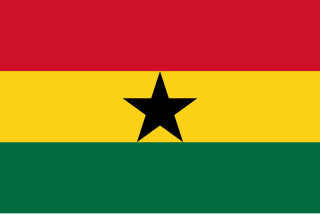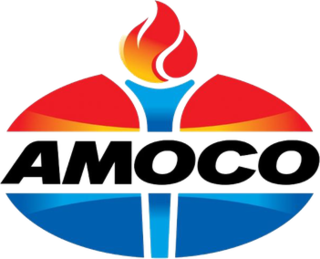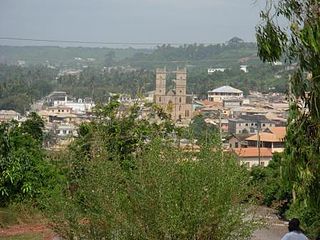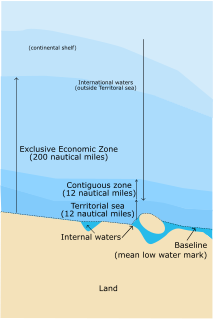Canada's natural gas liquids industry dates back to the discovery of wet natural gas at Turner Valley, Alberta in 1914. The gas was less important than the natural gasoline - "skunk gas" it was called, because of its distinctive odour - that early producers extracted from it. That natural gas liquid (NGL) could be poured directly into an automobile's fuel tank.

The South Pars/North Dome field is a natural-gas condensate field located in the Persian Gulf. It is by far the world's largest natural gas field, with ownership of the field shared between Iran and Qatar. According to the International Energy Agency (IEA), the field holds an estimated 1,800 trillion cubic feet of in-situ natural gas and some 50 billion barrels of natural gas condensates. On the list of natural gas fields it has almost as much recoverable reserves as all the other fields combined. It has significant geostrategic influence.

Canada's early petroleum discoveries took place near population centres or along lines of penetration into the frontier.

The petroleum industry of Ghana is regulated by the state-owned Ghana National Petroleum Corporation (GNPC) and administered by the state-owned Ghana Oil Company (GOIL).

The impact of the petroleum industry in China has been increasing globally as China is the fourth-greatest oil producer in the world.

The Al Shaheen Oil Field is a production oil and gas field off the north east coast of Qatar in the Persian Gulf, 80 kilometres (50 mi) north of Doha. The oil field lies above the North Gas Field, one of the largest gas fields in the world. The field has been operated by Maersk Oil Qatar AS of Denmark until July 2017 under a production sharing agreement with Qatar Petroleum, on behalf of the state of Qatar. As of June 2016, Qatar Petroleum and the French major Total S.A. established a new company known as "North Oil Company (Qatar)". The new company is 70% owned by Qatar Petroleum and 30% by Total. North Oil Company took over field operations on 14 July 2017.
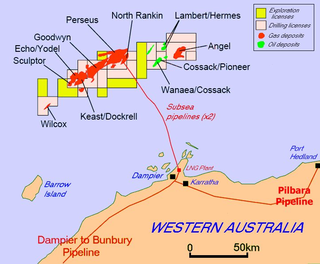
The North West Shelf Venture, situated in the north-west of Western Australia, is Australia's largest resource development project. It involves the extraction of petroleum at offshore production platforms, onshore processing and export of liquefied natural gas, and production of natural gas for industrial, commercial and domestic use within the state.
As of 2005, Azerbaijan produced a range of metals and industrial minerals, including aluminum, lead, iron, and zinc.
Energy in Ivory Coast refers to the energy industry in Ivory Coast. In recent years, the country has been an important supplier of energy to the sub-Saharan region as a result of its reserves of natural gas, excess electrical generating capacity, and recent offshore finds of petroleum and natural gas.
Krishna Godavari Basin is a peri-cratonic passive margin basin in India. It is spread across more than 50,000 square kilometres in the Krishna River and Godavari River basins in Andhra Pradesh. The site is known for the D-6 block where Reliance Industries discovered the biggest natural gas reserves in India in 2003

The Hutton oil field, located on the UK continental shelf, was the location for the first ever production Tension Leg Platform (TLP).

The FPSO Noble Seillean was a dynamically positioned floating oil production, storage and offloading vessel.

Vale is an offshore gas field in the North Sea located 16 kilometres (9.9 mi) north of the Heimdal gas field. The depth of the water in the field area is 115 metres (377 ft). Vale is considered a satellite to Heimdal field and is connected to it by a pipeline. Estimated reserves at Vale stand at 2.5 billion cubic metres of natural gas and 21 million barrels (3,300,000 m3) of gas condensate. Vale gas field is expected to produce 1.6 million cubic metres per day of natural gas and 2,600 barrels per day (410 m3/d) of condensate.

The Jubilee Oil Field is an oil field located off the coast of the Ghana's Western Region in the South Atlantic Ocean under the ownership of the National Petroleum Authority and the Ghana National Petroleum Corporation.
The MT Bonsu was a 16,000 tonne oil storage vessel that operated off the coast of Ghana in the Saltpond Oil Field. She was commissioned for operations in the field in 2008. Beached and scrapped at Aliaga, Turkey, 21/10/15.
The oil and gas industry in India dates back to 1889 when the first oil deposits in the country were discovered near the town of Digboi in the state of Assam. The natural gas industry in India began in the 1960s with the discovery of gas fields in Assam and Gujarat. As on 31 March 2018, India had estimated crude oil reserves of 594.49 million tonnes (MT) and natural gas reserves of 1339.57 billion cubic meters (BCM).
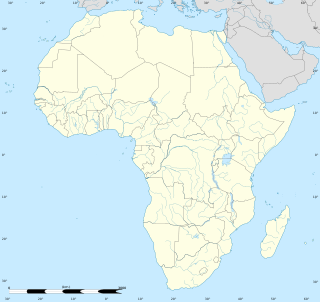
The Tweneboa Enyenra Ntomme Oil Field is an oil field within Ghana's territorial waters and the country's second major oil field after the Jubilee Oil Field. It is popularly known as the TEN oil field, an acronym formed from the three drilling fields that it comprises. Coincidentally, the exploration for oil in the basin also started with ten pre-first oil wells.
In addition to terrestrial oil wells, Canada also extracts oil via offshore drilling.
